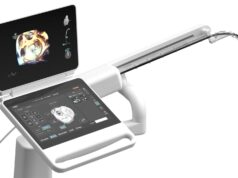
Several recent studies have validated that there is considerable mortality associated from a cardiac implantable electronic device infection in high-risk patients. A strategy using an antibacterial envelope is showing promising results not only reducing infection rates but also cutting on healthcare costs. Christopher R Ellis (Nashville, USA) writes on the subject.
Cardiac implantable electronic devices (CIEDs) are indicated for the prevention of sudden death and treatment of systolic heart failure in patients with QRS duration >120ms, as well as for brady-pacing. Though de novo implant growth has tapered off since 2010 due to a lack indication expansion and concerns of over-utilisation, the rise in CIED infection has more than doubled1,2,3. Typically, bacterial seeding of the implantable cardioverter defibrillator (ICD) or pacemaker pulse generator pocket at the time of device implant, revision, or replacement sets the stage. Skin flora (i.e. Staphylococcus sp,) account for the vast majority of the subsequent pocket infections and lead-related endocarditis that may ensue, presenting even up to a year from implantation. Published rates for CIED infection after a de novo implant range from <1% to 2.5%, and for generator changes, revisions or upgrades it may exceed 3%. Increasing CIED implants in patients with multiple co-morbid illnesses, higher complexity systems with multiple leads, and patient survival to multiple device pulse generator changes, account for many of the increased infections.
Several recent studies have validated that there is considerable mortality associated from a CIED infection, approaching 15% mortality at one year and 50% mortality at three years4. These are in fact lethal device complications, and are often not recognised, nor properly treated with complete system extraction in time to avoid massive health care costs. Morbidity from soft tissue removal, toxicity of intravenous antibiotics, risks of transvenous lead extraction, and the downstream cost of Life Vests, peripherally inserted central catheter (PICC) lines, home health, and CIED re-implantation make avoidance of infection critical. Estimated cost to treat one CIED infection, according to the Centers for Medicare and Medicaid Services (CMS), is US$52,000, though this does not take into account the above costs accrued after the removal of the system, which can easily reach US$150,000‒200,000.
Currently there is a single prophylactic strategy that has been subject to randomised trial investigation; the use of 1gm intravenous Cefazolin prior to skin incision5. Debate persists as to the role of the following non-standard of care approaches (ie., there is no data to support): intra-operative antibacterial solution (polymixin/bacitracin) wash, and post-operative oral antibiotics, ranging from three to seven days after implant. The extrapolation of trial results on wound infection reduction in abdominal surgery with the use of surgical chlorhexidine prep over iodine prep seems hard to argue against6. This should be a ‘best-practices’ standard for hospitals, but this is where the real data ends, at least until 2012.
Promising advancements to prevent infection now include the use of an antibacterial envelope fit snugly around the pulse generator, which elutes minocycline and rifampin directly into the device pocket, covering the majority of known pathogens. Previously delivered on a polypropylene skeleton, the current version Tyrx Absorbable Antibacterial Envelope (Tyrx-A, Medtronic) is completely absorbable (typically by ~9 weeks after insertion). Available at Vanderbilt Heart and Vascular Institute (Nashville, USA) starting in November 2009, we set restricted-use criteria for the Tyrx non-absorbable envelope to include only patients with high-risk for CIED infection (>2 traditional risk factors).
Over the ensuing three years (2009‒2012), we observed a low 0.4% rate of CIED infection in 260 cases with mean of 2.8 risk factors and minimum follow-up of three months post operatively7. A matched control cohort of 639 patients undergoing device implantation at Vanderbilt Heart and Vascular Institute, who had a mean of 2.8 risk factors for infection but did not receive an envelope, had a 3.1% infection rate. The control patients did receive pre-operative intravascular 1gm Cefazolin and post-operative oral antibiotics for 3‒5 days. Of the 19 infection cases in the control arm, four patients died from endocarditis and sepsis related to the CIED infection (21%). Continued use of the newer Tyrx-A absorbable envelope has similarly been associated with a low (0%) rate of infection in over 135 additional treated high-risk cases at Vanderbilt. The Valley Health System study8 has found comparable rates (<1%), and improved estimation of the patients who may derive the greatest benefit.
Hospital and health care systems are increasingly sensitive to cost effectiveness, and rightly so. The cost of a Tyrx envelope is coming out of the bottom line for charges during the index CIED procedure at US$895 per device. If our absolute risk reduction of 2.6% in high-risk CIED patients is proven in upcoming prospective randomised trials with the Tyrx-A envelope, then it would take ~38 Tyrx-A treated patients to prevent one CIED infection. The WRAP-IT (World-wide randomized antibiotic envelope infection prevention trial) trial of Tyrx-A versus standard CIED infection prophylaxis in generator change recipients, and the Vanderbilt randomized trial of Tyrx-A envelope alone, versus the Tyrx-A envelope plus antibacterial irrigant and post-operative antibiotics, should provide the data needed.
At Vanderbilt University Medical Center, we currently estimate that for every 100 high-risk CIED recipients treated with a Tyrx-A envelope, we save approximately US$50,000 in total care spend. When considering the management cost of a PICC line, six weeks of intravenous antibiotics, home health, drug level monitoring, temporary pacing systems, Life-Vest when indicated, and the cost of a new system, the Tyrx-A envelope should prove to be a high priority for accountable care organisations as well. Non-payment from CMS to hospitals for the preventable complication of a CIED infection regardless of where it is ultimately treated will push the issue.
References
1. Voigt A et al. Rising rates of cardiac rhythm management device infections in the United States: 1996 through 2003. J Am Coll Cardiol 2006;48:590–591
2. Greenspon AJ et al. 16-year trends in the infection burden for pacemakers and implantable cardioverter-defibrillators in the United States 1993 to 2008. J Am Coll Cardiol 2011;58:1001–1006
3. Cabell CH et al. Increasing rates of cardiac device infections among medicare beneficiaries: 1990–1999. Am Heart J 2004;147:582–586
4. Sohail, MR et al. Increased long-term mortality in patients with cardiovascular implantable electronic device infections. PACE 2015;38(2):231‒239
5. de Oliveira J et al. Efficacy of antibiotic prophylaxis before the implantation of pacemakers and cardioverter-defibrillators. Circ Arrhythm Electrophysiol 2009;2:29–34
6. Darouiche R et al. Chlorhexidine–alcohol versus povidone–iodine for surgical-site antisepsis. N Engl J Med 2010;362:18–26
7. Kolek MJ et al. Use of an antibacterial envelope is associated with reduced cardiac implantable electronic device infection in high-risk patients. PACE 2013 Mar;36(3):354‒61
8. Mittal S et al. Cardiac implantable electronic device infections: Incidence, risk factors, and the effect of the AigisRx antibacterial envelope. HeartRhythm 2014;11:595–601
Christopher R Ellis is Director of Cardiac Electrophysiology Laboratory at Vanderbilt Heart and Vascular Institute, Nashville, USA. He reports receiving annual consulting fees from Medtronic. The company has also given research funding to Vanderbilt University for the Tyrx-A study with no direct compensation to Christopher Ellis.









